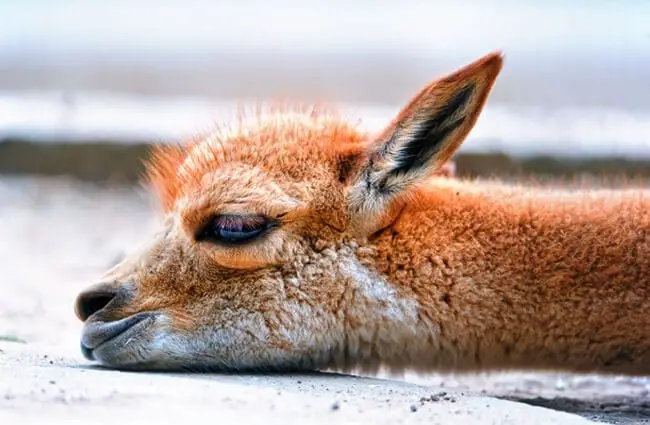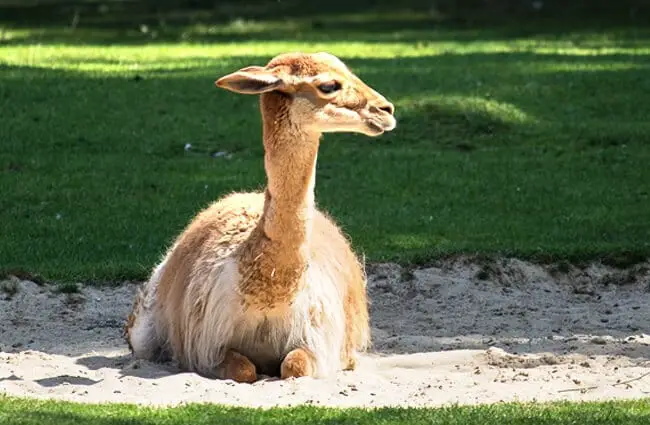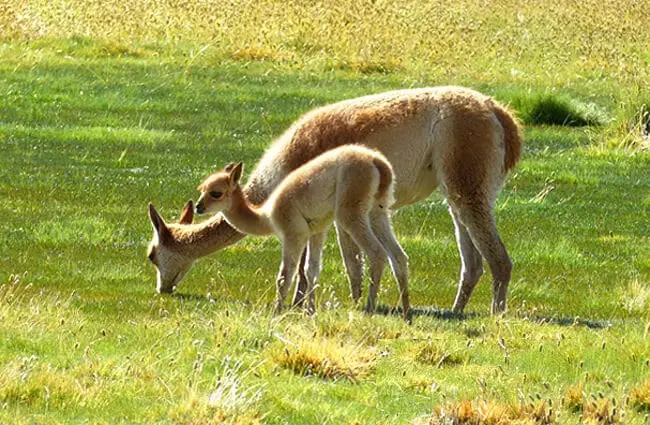The Vicuña: Ghost of the Andes
High in the stark, breathtaking landscapes of the Andes Mountains roams an animal of exquisite beauty and remarkable resilience – the vicuña. Often referred to as the “ghost of the Andes,” this wild relative of the llama and alpaca is revered for its incredibly fine wool, historically prized by Inca royalty and still considered one of the most luxurious natural fibers available today. This guide will delve into the fascinating world of the vicuña, exploring its biology, behavior, habitat, and conservation status.

Vicuña Basics: Appearance, Size, and Lifespan
The vicuña (Vicugna vicugna) is the smallest of the South American camelids. Adults typically stand between 75 and 85 centimeters at the shoulder and weigh between 35 and 65 kilograms. Their coat is a rich cinnamon brown on the back and flanks, contrasting with a white belly and legs. The most defining feature is undoubtedly their incredibly soft, dense fleece. This remarkable adaptation helps them survive the harsh, cold conditions of the high Andes.
Vicuñas have a relatively long lifespan, typically living between 15 and 20 years in the wild. Their streamlined bodies and powerful legs allow them to navigate the steep, rocky terrain with ease. They are diurnal creatures, most active during the day, foraging for food and engaging in social interactions.
Habitat and Distribution
Vicuñas are exclusively found in the high alpine areas of the Andes Mountains in South America. Their range extends across Peru, Bolivia, Argentina, and Chile. They prefer altitudes between 3,200 and 4,800 meters, inhabiting grasslands, slopes, and plateaus. These areas offer sparse vegetation, but provide the necessary grazing for vicuña populations.
The harsh conditions of their habitat have shaped their physiology and behavior. Vicuñas are well adapted to the low oxygen levels and extreme temperature fluctuations found at high altitudes. They thrive in environments where few other mammals can survive.

Diet and Foraging Behavior
Vicuñas are herbivores, primarily grazing on the tough, wiry grasses that grow in the high Andes. Their diet also includes other alpine vegetation, such as herbs and shrubs. They are selective feeders, carefully choosing the most nutritious plants available.
Vicuñas have a highly efficient digestive system that allows them to extract maximum nutrients from the sparse vegetation. Their three-chambered stomach enables them to ferment and digest fibrous plant material effectively. This adaptation is essential for survival in their nutrient-poor environment.
Social Structure and Reproduction
Vicuñas live in family groups, consisting of a dominant male, several females, and their young. These groups, known as harems, defend a specific territory against other vicuña families. Young males, upon reaching maturity, are expelled from the harem and form bachelor herds until they are able to challenge a dominant male and establish their own family group.
The breeding season typically occurs during the rainy season, from March to May. Gestation lasts approximately 11 months, and females usually give birth to a single calf. Calves are precocial, meaning they are relatively well-developed at birth and able to stand and walk shortly after being born. They are nursed for about six to eight months, gradually transitioning to a diet of grass and other vegetation.

Vicuña and Ecosystem Interaction
Vicuñas play a vital role in their high altitude ecosystem. Their grazing helps maintain the health and diversity of alpine grasslands. They also serve as prey for predators such as pumas and Andean foxes. Their presence indicates a healthy and balanced ecosystem. They compete for resources with other herbivores such as guanacos and alpacas, and they influence the distribution of plant species through their selective grazing patterns.
Evolutionary History
Vicuñas are believed to have evolved from ancestors of the camel family that migrated to South America millions of years ago. They are closely related to the guanaco, alpaca, and llama. Genetic studies suggest that the vicuña and guanaco are the wild ancestors of the domesticated alpaca and llama, respectively. The domestication of these animals had a profound impact on the cultures and economies of the Andean region.

Vicuña and Humans: A Complex Relationship
For centuries, vicuñas have held a significant place in Andean cultures. The Inca revered their wool as a gift from the gods, and only royalty were permitted to wear garments made from it. The Spanish colonial period saw a dramatic decline in vicuña populations due to overhunting for their valuable fleece.
In the 20th century, vicuña populations reached critically low levels. However, thanks to conservation efforts, including strict protection laws and sustainable harvesting practices, populations have rebounded significantly. Today, vicuña wool remains a highly prized luxury fiber, and sustainable harvesting programs provide economic benefits to local communities while ensuring the long-term survival of the species.
Conservation Status and Threats
The vicuña is currently listed as “Least Concern” by the International Union for Conservation of Nature (IUCN). However, the species still faces several threats, including habitat loss, illegal poaching, and climate change. The expansion of agriculture and mining activities encroaching on vicuña habitat, while climate change is altering vegetation patterns and increasing the risk of extreme weather events. Continued conservation efforts are essential to ensure the long-term survival of this iconic species.

Finding Vicuñas in the Wild
If you are fortunate enough to travel to the Andes Mountains, you may have the opportunity to observe vicuñas in their natural habitat. The best locations for vicuña viewing include the high plateaus of Peru, Bolivia, Argentina, and Chile. National parks and protected areas offer the highest chances of spotting these elusive animals. Remember to maintain a respectful distance and avoid disturbing their natural behavior. Bring binoculars and a camera to capture the beauty of these magnificent creatures.
Caring for Vicuñas in Captivity
Caring for vicuñas in captivity requires specialized knowledge and facilities. They need large enclosures that mimic their natural habitat, including rocky terrain, grassy areas, and access to fresh water. Their diet should consist of high-quality grass hay and supplemental feed. Regular veterinary care is essential to monitor their health and prevent disease. Vicuñas are sensitive animals and require a quiet, stress-free environment. Enrichment activities, such as providing natural browse and opportunities for social interaction, can help improve their well-being.

Interesting Facts
- Vicuña fiber is exceptionally fine, measuring only 12-13 microns in diameter.
- Unlike many other camelids, vicuñas cannot be easily domesticated.
- Vicuñas have specialized blood cells that allow them to thrive at high altitudes.
- The Incas practiced a communal shearing ceremony called the “chaccu” to harvest vicuña wool.
- Vicuñas are known for their elegant and graceful movements.
- They communicate using a variety of vocalizations and body language.
The vicuña remains a symbol of the rugged beauty and ecological richness of the Andes Mountains. Its story is one of resilience, adaptation, and the importance of conservation. By understanding and appreciating this remarkable animal, we can help ensure its survival for generations to come.

![Red Angus Closeup of a beautiful Red Angus cowPhoto by: U.S. Department of Agriculture [pubic domain]https://creativecommons.org/licenses/by/2.0/](https://animals.net/wp-content/uploads/2020/03/Red-Angus-4-238x178.jpg)




![Red Angus Closeup of a beautiful Red Angus cowPhoto by: U.S. Department of Agriculture [pubic domain]https://creativecommons.org/licenses/by/2.0/](https://animals.net/wp-content/uploads/2020/03/Red-Angus-4-100x75.jpg)

